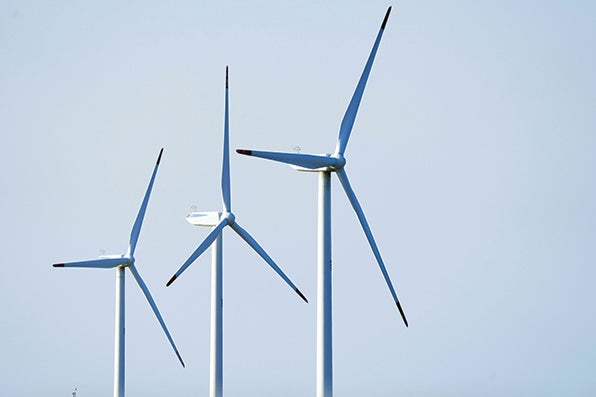Officials with the federal Bureau of Ocean Energy Management discussed the status of two areas identified for potential wind energy lease sales in the gulf, the process used to identify the areas, and next steps moving forward.
Tershara Matthews, chief of BOEM’s Gulf of Mexico office, detailed two draft wind energy areas in the Gulf of Mexico recently posted for public comment by the Department of the Interior: a 546,645 acre site approximately 24 nautical miles off the coast of Galveston, Texas and a 188,023 acre site 56 nautical miles from Lake Charles, Louisiana.
Matthews said the sites were selected following multiple calls for interest from industry and an engagement process with stakeholders and various government agencies, including the National Oceanic and Atmospheric Administration.
The proposal and accompanying draft environmental assessment took into consideration aquaculture opportunity areas, buffers requested by the U.S. Coast Guard, active oil and gas platforms and pipelines, high to moderate shipping areas, Department of Defense requests for low altitude training, migratory bird routes, popular fishing and shrimping areas and other concerns, she said.
The draft wind energy areas and environmental assessment are now open for public comment through Aug. 19, Matthews said.
“Once we receive that feedback … we’re going to further whittle down those areas to lease areas,” she said, adding that BOEM is eyeing lease sales for early 2023.
Following the sales, companies that plan to develop the areas will formulate plans and secure permits, which require environmental reviews, she said.
“It will probably be five years before you see turbines in the water,” Matthews said.
Several members of the task force questioned BOEM officials on details of the future wind farms.
Matthews said current rules being developed would require turbine spacing of 1 nautical mile, and there are currently no regulations preventing fishing off the turbines. Power connections to the mainland would be buried six feet under the ocean floor, likely using existing right-of-ways.
Matthews said leases would run for 33 years, and noted that areas that are ultimately leased could be much smaller than the proposed wind energy areas.
Task force members also inquired about compensation for states adjacent to those areas.
Matthews clarified that there is currently no federal revenue sharing agreement for wind energy in the Gulf of Mexico, but noted that proposals are pending in Congress to change that.
U.S. Sen Bill Cassidy, R-La., and U.S. Sen. John Kennedy, R-La, among others are promoting the Reinvesting in Shoreline Economies and Ecosystems Act, which cleared the Senate Energy and Natural Resources Committee last month. U.S. Reps. Troy Carter, D-New Orleans, and Steve Scalise, R-Jefferson, also recently introduced the Budgeting for Renewable Electrical Energy Zone Earnings Act in the House.
The Senate legislation would send 37.5% of wind energy revenues to states, while the House bill would set the same at 50%.




